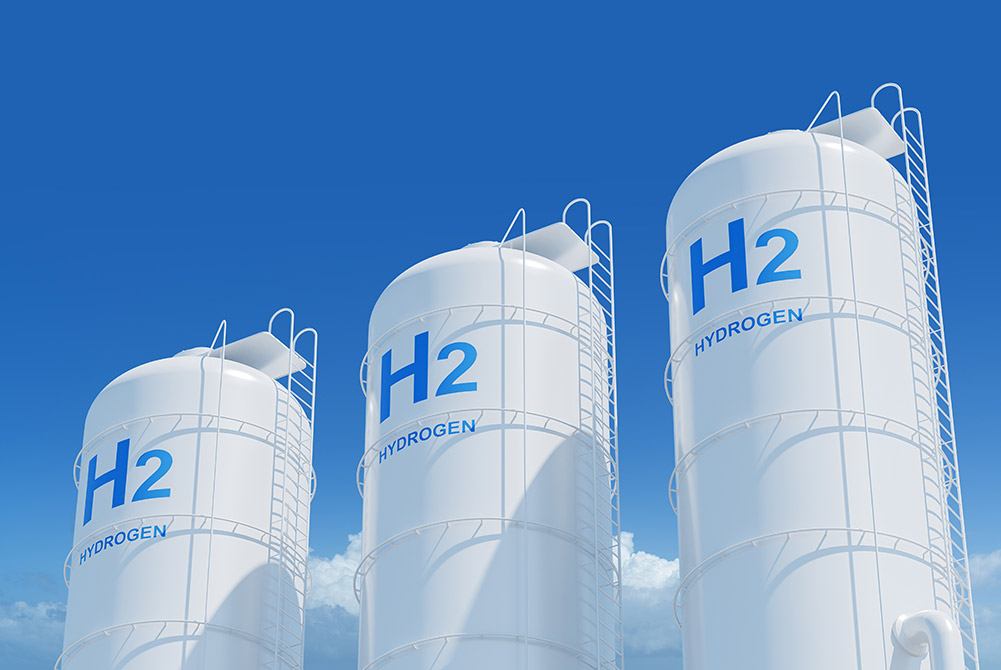
© AdobeStock/ImageFlow
Funding: Uniper Hydrogen GmbH
Abstract: Hydrogen plays a central role in climate protection and the energy transition. Green hydrogen can be produced from renewable electricity via electrolysis, while blue and turquoise hydrogen are produced from natural gas. In the case of blue hydrogen, the CO2 produced during steam reforming is captured and stored in underground geological formations, such as depleted gas reservoirs (CCS). Turquoise hydrogen is produced by methane pyrolysis.
According to the current political agenda, the long-term development of a sustainable hydrogen economy should be geared towards the use of green hydrogen. However, since hydrogen demand will increase significantly in the coming years, it can only be met to a limited extent by green hydrogen in the short and medium term – particularly due to limited production capacities for electrolysis plants and high production costs. In the transition phase, the use of blue and turquoise hydrogen can help to accelerate the scaling of a global, climate-neutral or low-emission hydrogen value chain.
The production of both blue and turquoise and green hydrogen is possible in many regions of the world at lower costs than in Germany. In particular, natural gas-producing countries often have excellent conditions for the production of green and blue hydrogen. This opens up the opportunity for them to gradually convert existing business areas to sustainable energy sources while simultaneously reducing greenhouse gas emissions. The research project will further develop the existing modeling of the value chain for blue and green hydrogen and analyze their interactions with the ramp-up of green hydrogen imports. A central aspect of the investigation is the timeline for green hydrogen to gradually become competitive with blue hydrogen. In addition, it is important to identify potential lock-in effects – for example, through investments in plants for the production of blue hydrogen – in order to make the transformation to climate neutrality sustainable in the long term and without “stranded investments”.
Project manager: Veronika Grimm
Staff: Nima Farhang-Damghani
Project term: 19.04.2022 – 31.06.2025